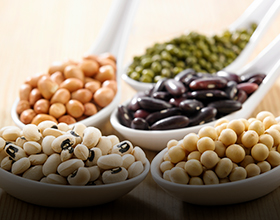Join econexia
10 steps to export

Find out below the necessary procedures to export goods from our country.
STEP 1: STUDY THE MARKET:
From a commercial point of view, an export process should start with a market study
Identify the potential of your product in the international market, it is recommended to consult issues that determine an initial viability of the export process
Characteristics of the demand, of the export destination country
Basic economic indicators (sale and purchase prices, exchange rate, inflation, imports, exports, national production)
Business customs and competition
STEP 2. CREATE OR FORMALIZE YOUR COMPANY:
Formalize your commercial activity, requiring that the person obtain or update the RUT in box 54, where they are enabled as a customs user - exporter - the above must be done in one of the DIAN offices
Obtain the digital signature in CERTICAMARA (subsidiary entity of the Bogota Chamber of Commerce - www.certicamara.com) that grants a username and password to access the VUCE.
Enroll in the Single Window for Foreign Trade – VUCE
Register in the module of the Single Foreign Trade Form - FUCE as a national producer, this step is essential for certificates of origin
STEP 3. DETERMINE THE TARIFF CLASSIFICATION:
Make a proper tariff classification
From the exporters' point of view, it is necessary to identify the importing country's tariff to carry out the same exercise to determine the income requirements, rates and taxes, and other aspects that may affect marketing in the destination country.
STEP 4. ISSUE THE CERTIFICATE OF ORIGIN.
The exemptions or tariff reductions granted in the negotiations of free trade agreements require the issuance of a Certificate of Origin to enjoy these preferences.
Previously fill out an Affidavit of Determination of Origin
Certificates of Origin can be issued in two ways:
Certificates of origin issued by the customs authority
Self-certification
STEP 5. REQUEST THE APPROVAL
It is essential to identify the requirements that each of the products must be exported and imported from each country, since it must comply with the protection of human, animal, and environmental health, through the certification of safety and security of products for use or consumption by humans and animals.
The 21 State Entities in which the approval import certificates, or export permits must be processed are available through the VUCE
Locate in the VUCE, the export module, where the pre-export authorization procedures established by the respective competent authorities for certain products are carried out, which can be consulted in Circular 38 of 2016 of the MINCIT.
STEP 6. DETERMINE THE INTERNATIONAL NEGOTIATION TERMS – INCOTERMS
Prior to the signing of an international sale contract, the preparation of the invoice and even the presentation of a commercial offer (quotation), it is necessary to determine the International Negotiation Terms - INCOTERMS that meets the needs, resources, and knowledge both exporter as of the importer
STEP 7. AGREE TO THE INTERNATIONAL SALES CONTRACT
A fundamental requirement for the export process is to agree on the terms in which the negotiation will take place, within which the commercial invoice is usually made, which is a security and document proving a commercial transaction
There are several aspects that are not regulated, stipulated, or agreed in said document, where two fundamental aspects become important.
The preparation of an international sales contract
The use of international negotiation terms.
STEP 8. DEFINE THE EXPORT MODALITY
The export modalities that allow obtaining competitive advantages in the markets by knowing and applying them properly.
Definitive export.
Temporary export for outward processing.
Temporary export for re-importation in the same state.
Re-export.
Reshipment
Export for postal traffic and urgent shipments.
Export of samples without commercial value.
Temporary exports made by travelers.
Export of household goods and
Special Export Programs
Step 9. CUSTOMS PROCEDURE FOR THE EXPORT OF GOODS IN COLOMBIA:
Keep in mind the key procedures:
Boarding authorization request (SAE).
Transfer to the place of shipment or free zone with transfer form.
Entry to the primary customs zone or free zone.
Customs inspection.
Boarding authorization.
Shipment.
Shipping certification.
Final export declaration.
Keep the documents, supports of the Boarding Authorization Request - SAE
Keep the documents, supports of the Export Declaration
Step 10
It is necessary to agree in advance with your counterpart abroad the means of payment to be used, either direct money order (advance, against delivery of documents, etc.) or one that uses risk coverage, such as letters of credit or guarantees
Stand By.
To expand the concepts, it is suggested to consult the Practical Guide for "International Payment Methods".
Remember that by current legal regulations, the channeling of foreign currency from exports must be channeled exclusively through authorized exchange market intermediaries (commercial bank or clearing account).
Reference sources:
PROCOLOMBIA – Herramientas para el exportador. https://www.colombiatrade.com.co/herramientas-del-exportador/logistica/directorio-dedistribucion-fisica-internacional
PROCOLOMBIA - Certificado de origen: https://procolombia.co/sites/default/files/certifacaion_para_obtener_normas_de_origen.pdf
MINCIT – Tratados comerciales de Colombia. http://www.tlc.gov.co/
Updated by UBC - December 2019.
Courtesy of:
Visit other ecosystems
Lifestyle and consumption
Agribusiness and food
Industry, building and manufacturing
Creative and cultural industries
Fashion and clothing manufacture
Tourism
Similar contents
Similar contents
- A partnership:














